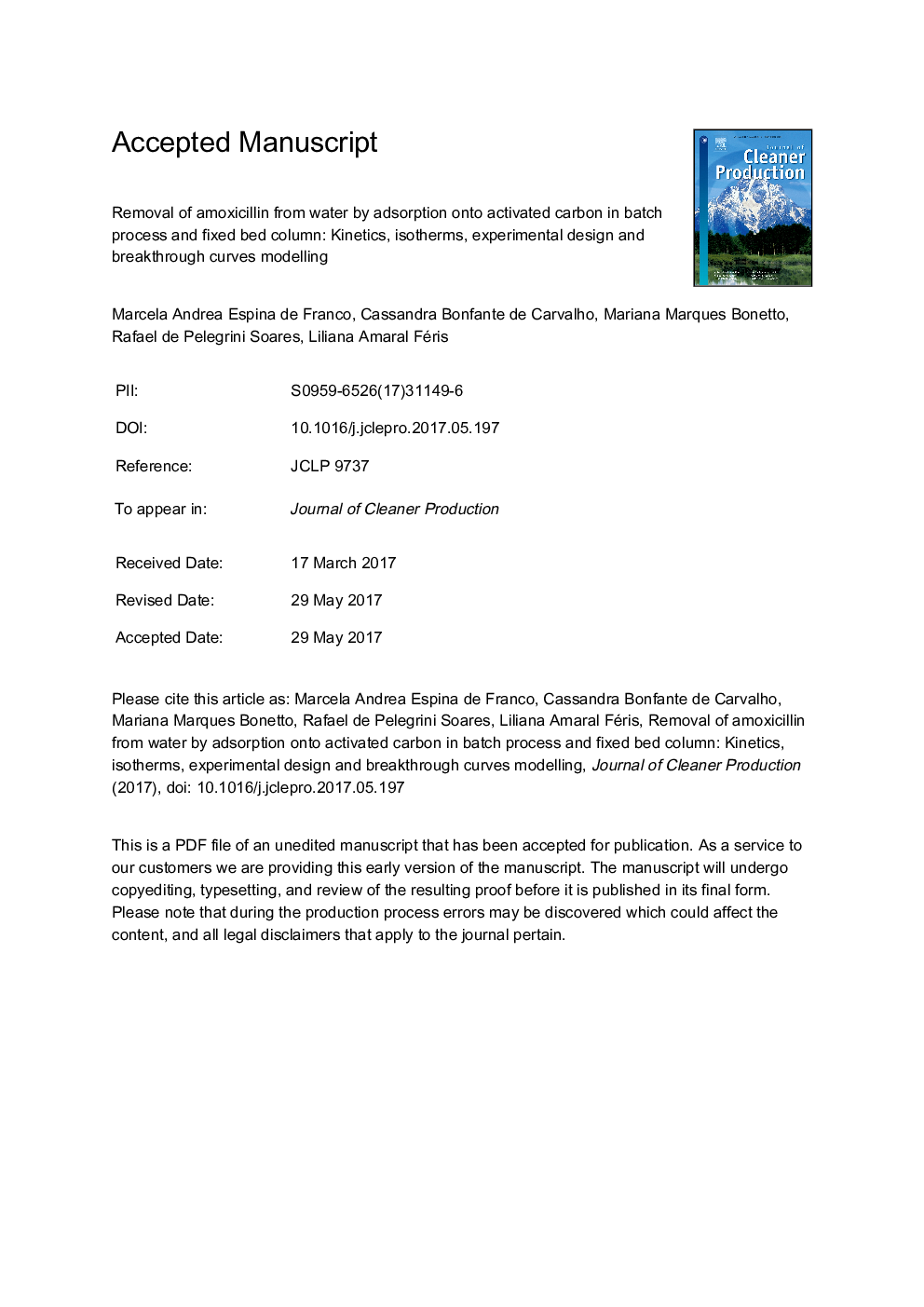| Article ID | Journal | Published Year | Pages | File Type |
|---|---|---|---|---|
| 5480894 | Journal of Cleaner Production | 2017 | 33 Pages |
Abstract
The occurrence of emerging contaminants in water and wastewater and their inefficient removal on conventional treatment is the key issue in the reuse of water resources. Adsorption by fixed bed column is usually used to remove organic contaminants from aqueous phase. The adsorption of the widely used antibiotic amoxicillin onto activated carbon was studied. Batch adsorption experiments were developed in order to determine the equilibrium time and the best isotherm model. Pseudo first order, pseudo-second order and intraparticle diffusion models were applied to the experimental data to determine the adsorption kinetics. Pseudo-second-order kinetic model described the adsorption process with a R2 approximately 0.99. Adsorption isotherm obtained was better fitted by Sips model compared to Langmuir and Freundlich models. The effects of inlet amoxicillin concentration (20-100 mg Lâ1), feed flow rate (3-5 mL minâ1) and amount of activated carbon (0.5-1.0 g) on the fixed-bed adsorption were determined by two-level factorial experimental design. Breakthrough (C/C0 = 0.05) and saturation times (C/C0 = 0.95) were higher at higher adsorbent dosage and lower flow rates. The increase of amoxicillin initial concentration increased breakthrough but decreased saturation times. The volume of effluent treated per gram of activated carbon was higher at lower initial concentrations and adsorbent dosage. Fractional bed utilization (FBU) increased with higher flow rate and AMX concentration and lower amount of activated carbon. Yan model better fitted the experimental data of the breakthrough curves compared to Thomas and Bohart-Adams models with R2 of 0.9840.
Related Topics
Physical Sciences and Engineering
Energy
Renewable Energy, Sustainability and the Environment
Authors
Marcela Andrea Espina de Franco, Cassandra Bonfante de Carvalho, Mariana Marques Bonetto, Rafael de Pelegrini Soares, Liliana Amaral Féris,
